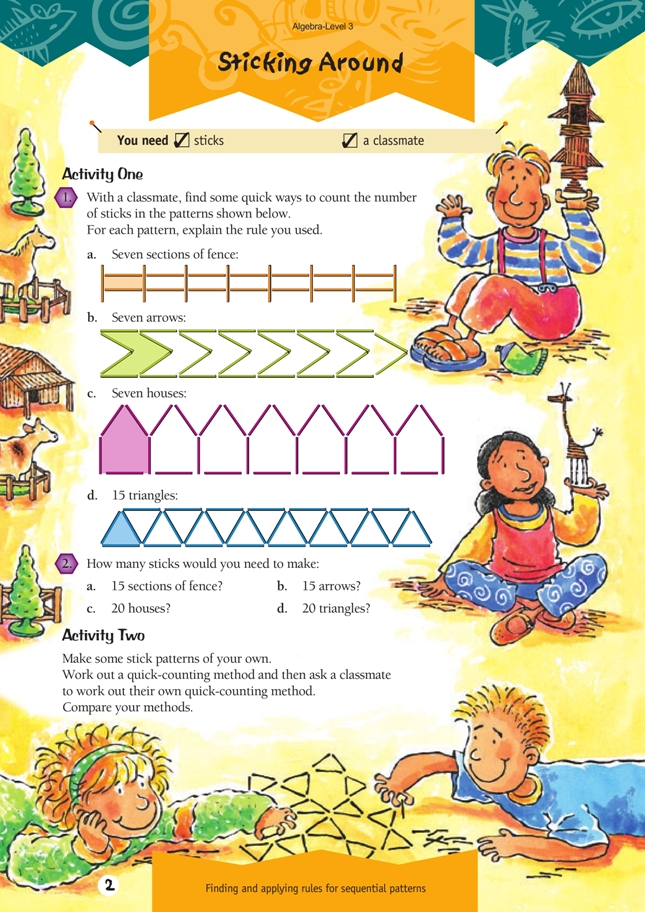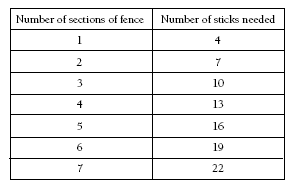This is a level 3 algebra strand activity from the Figure It Out series.
A PDF of the student activity is included.
Click on the image to enlarge it. Click again to close. Download PDF (394 KB)
find and apply rules for sequential patterns
sticks
classmate
Activities One and Two
These activities encourage students to work in pairs to:
• look for patterns
• talk about their results
• develop a method of recording.
These activities are similar to the ones on page 1 of the students’ booklet. You may need to explain to students that the shaded part is one section of fence. Ask students how many extra sticks are needed for each new section of fence. Once again, encourage them to use tables to record the number of sticks needed:
From this, students should recognise that each time another section is added to the fence, the number of sticks increases by three.
A quick way of counting in Activity One, 1a, is to count the sticks in threes and have one left over, for example, 3 + 3 + 3 + 3 + 3 + 3 + 3 + 1 = 22, or students might say “Seven groups of three plus one left over makes 22”. Ask students if they can think of a shorter way to write this answer, for example, 7 x 3 + 1 = 22.
Students could use this equation as a rule to find out how many sticks there are in a larger (or any) number of sections, such as in question 2a. In 2a there are three extra sticks added on for each new section and there are 15 sections. The one added on at the end of the equation is the number of sticks needed to close off the end of the pattern. So the new equation would be 15 x 3 + 1 = 46.
As a general rule, this could be written as:
the number of sticks in n sections of fence = n x 3 + 1.
Follow the same procedure for the arrows, houses, and triangles. The general rule for the arrows will be n x 4 + 2. For the houses, it will be n x 4 + 1, and for the triangles, it will be n x 2 + 1.
Answers to Activities
Activity One
1. Answers will vary. Possible counting methods and rules for each pattern are:
a. Count the fence sticks in groups of 3, as shown below (3 + 3 + 3 + 3 + 3 + 3 + 3 + 1 = 7 x 3 + 1 = 22):
b. Count the arrows in groups of 4 sticks (4 + 4 + 4 + 4 + 4 + 4 + 4 + 2 = 7 x 4 + 2 = 30):
c. Count the houses in groups of 4 sticks (4 + 4 + 4 + 4 + 4 + 4 + 4 + 1 = 7 x 4 + 1 = 29):
d. Count the triangles in groups of 2 sticks (15 x 2 + 1 = 31) or in groups of 4 sticks
(4 + 4 + 4 + 4 + 4 + 4 + 4 + 3 = 7 x 4 + 3 = 31):
2. a. 46
b. 62
c. 81
d. 41
Activity Two
Answers will vary.




